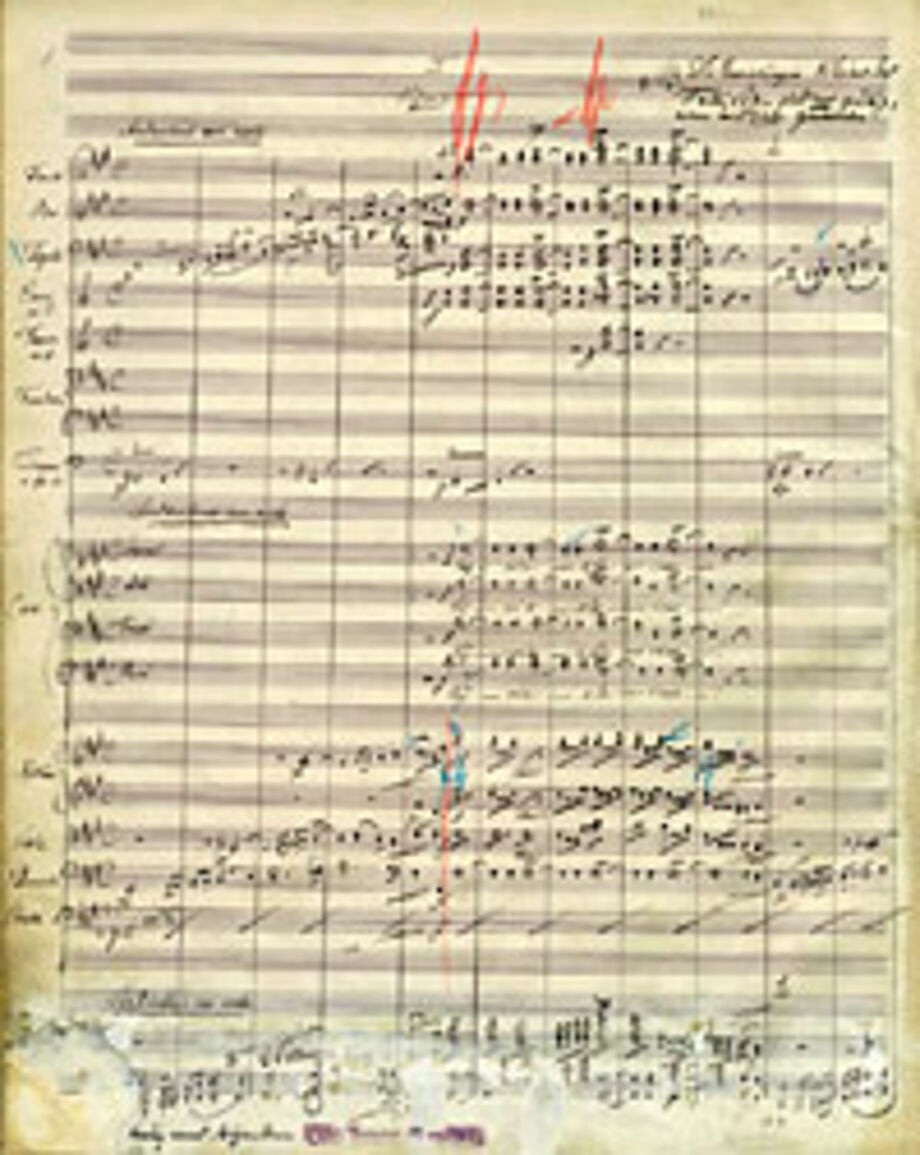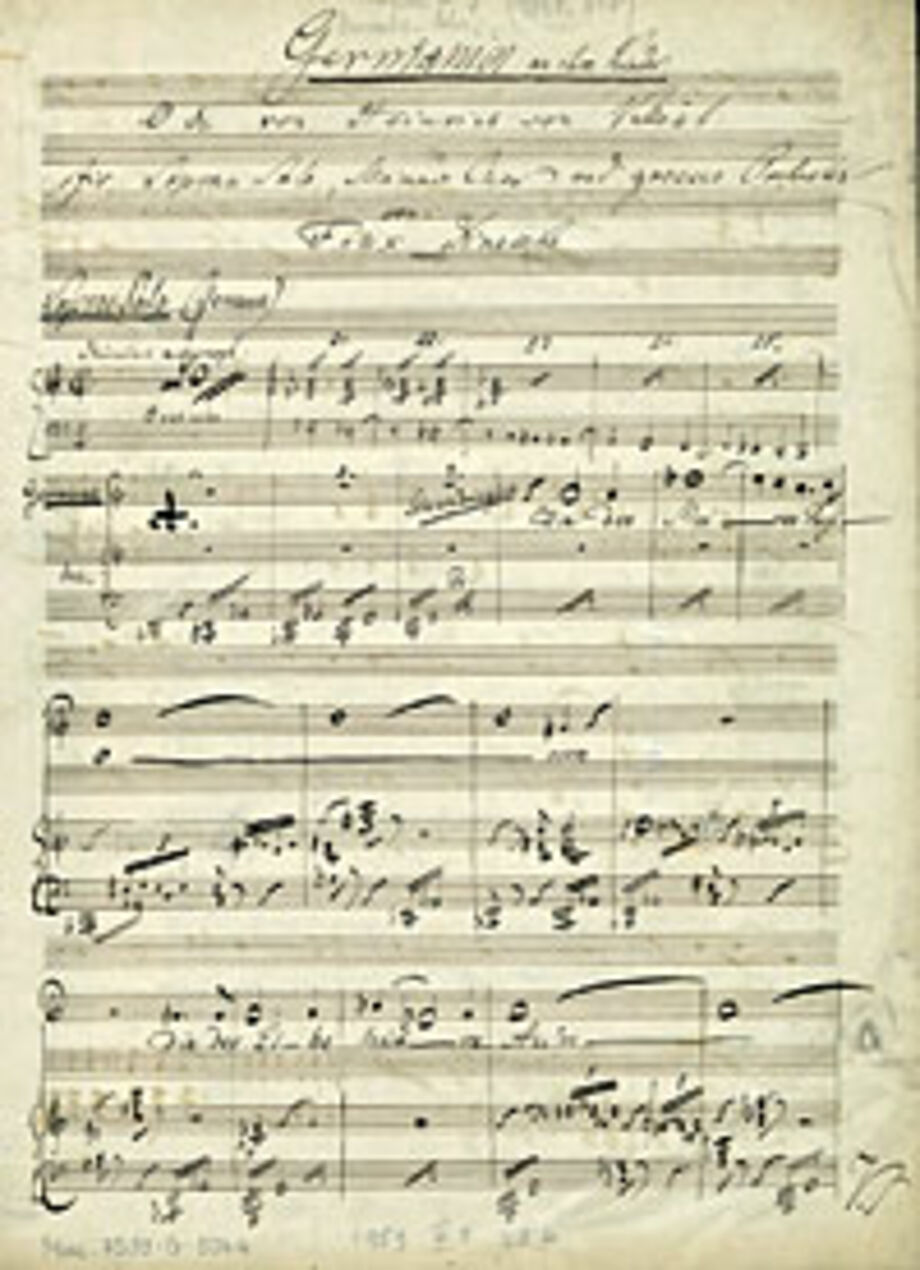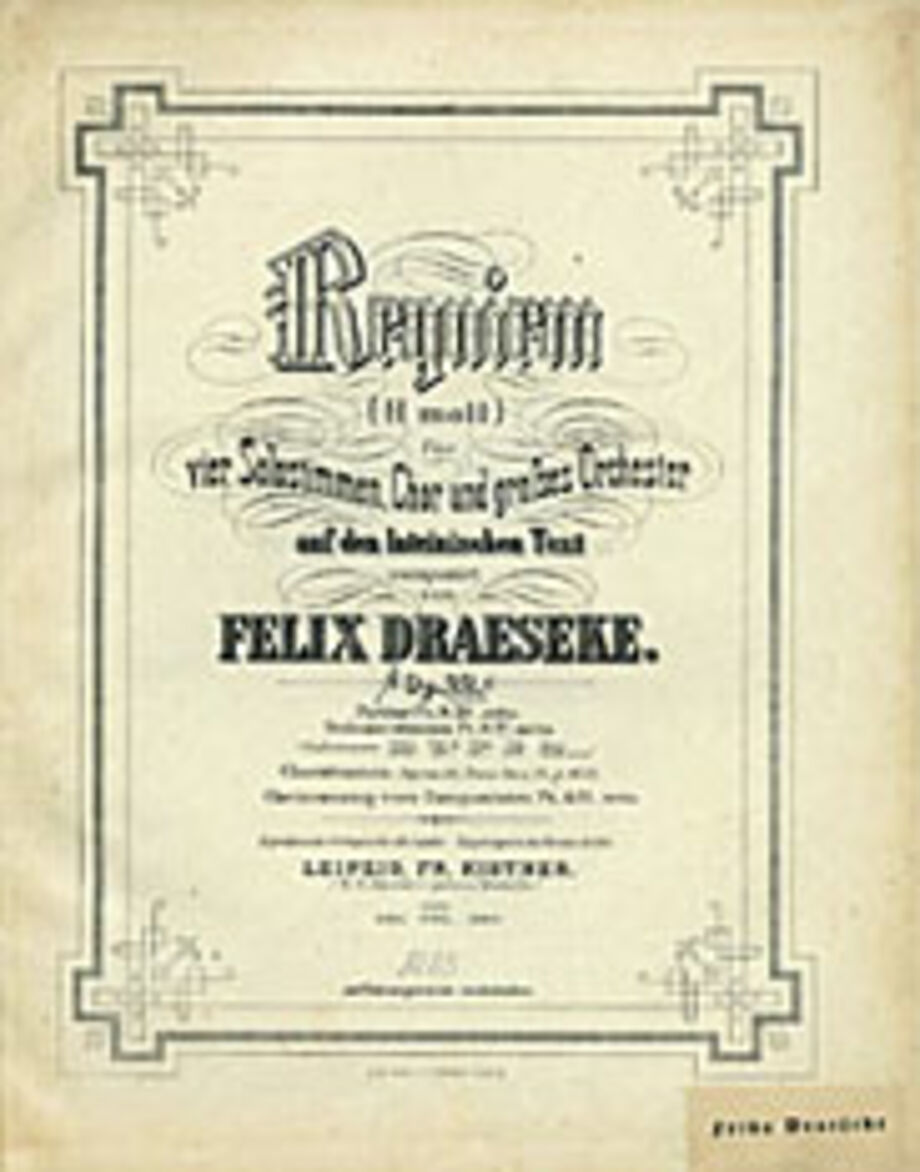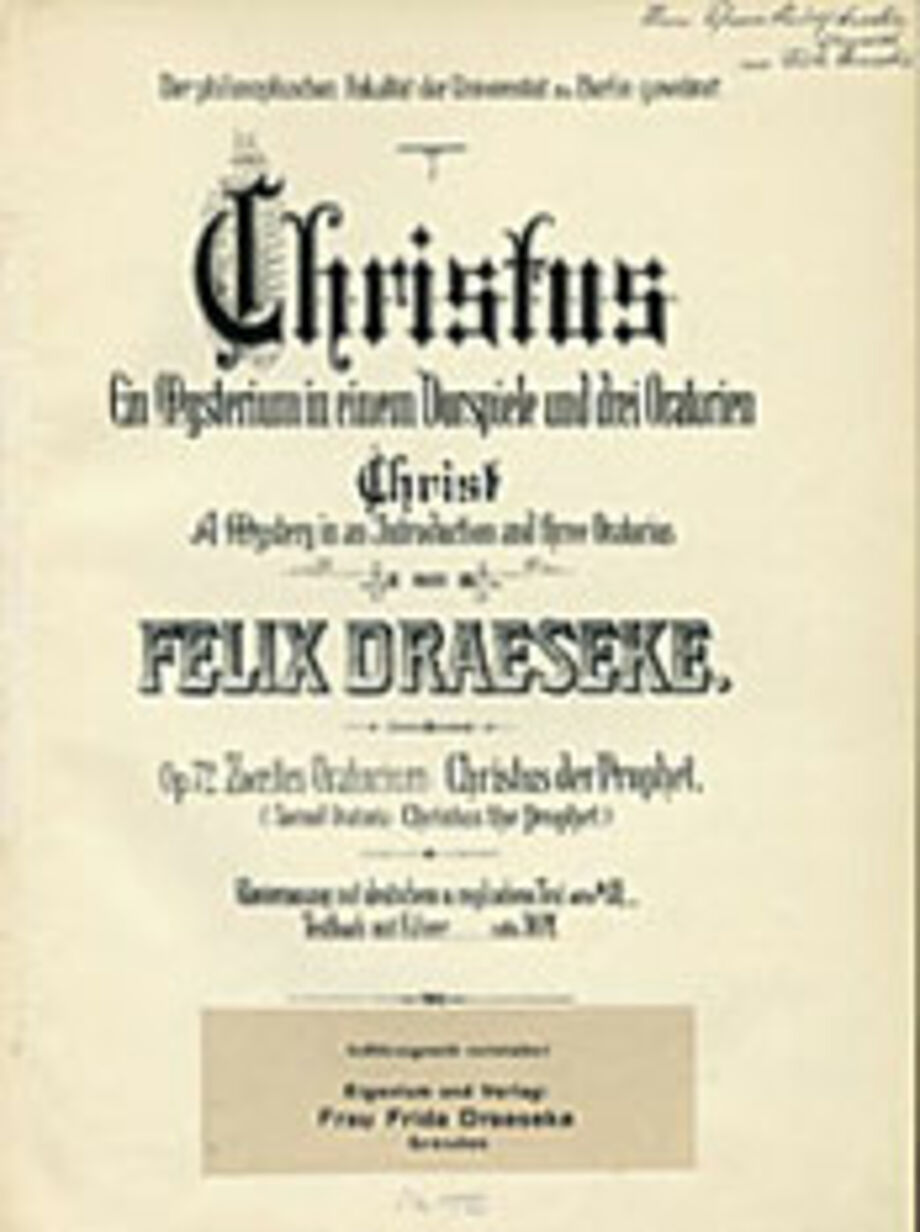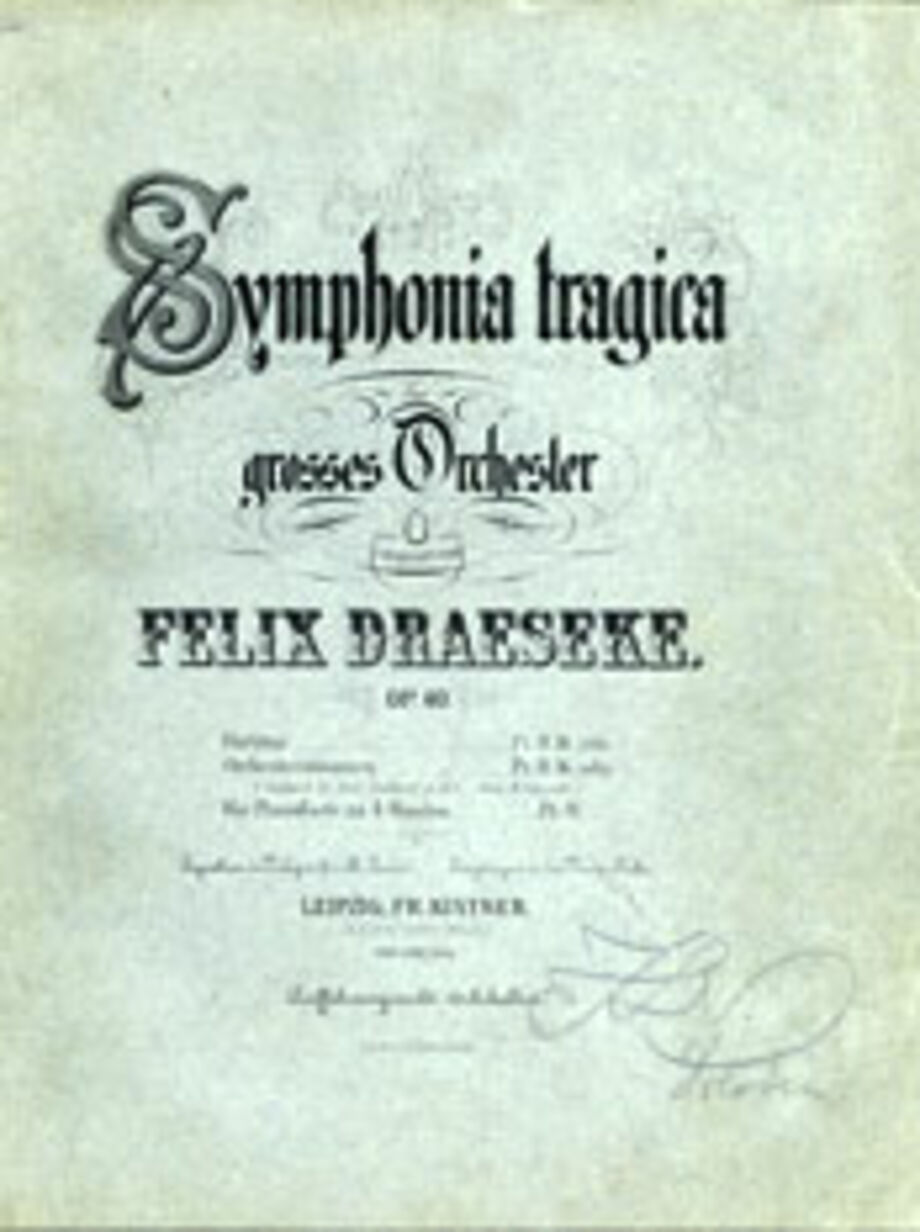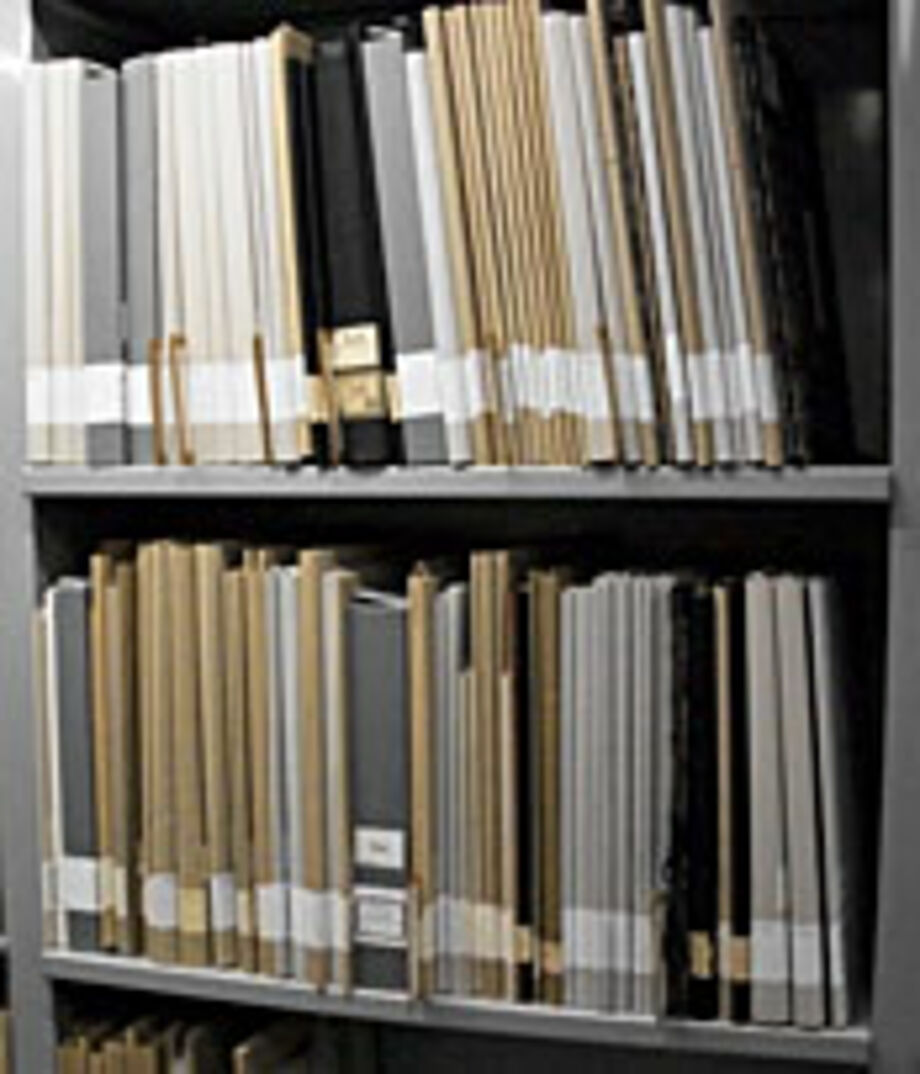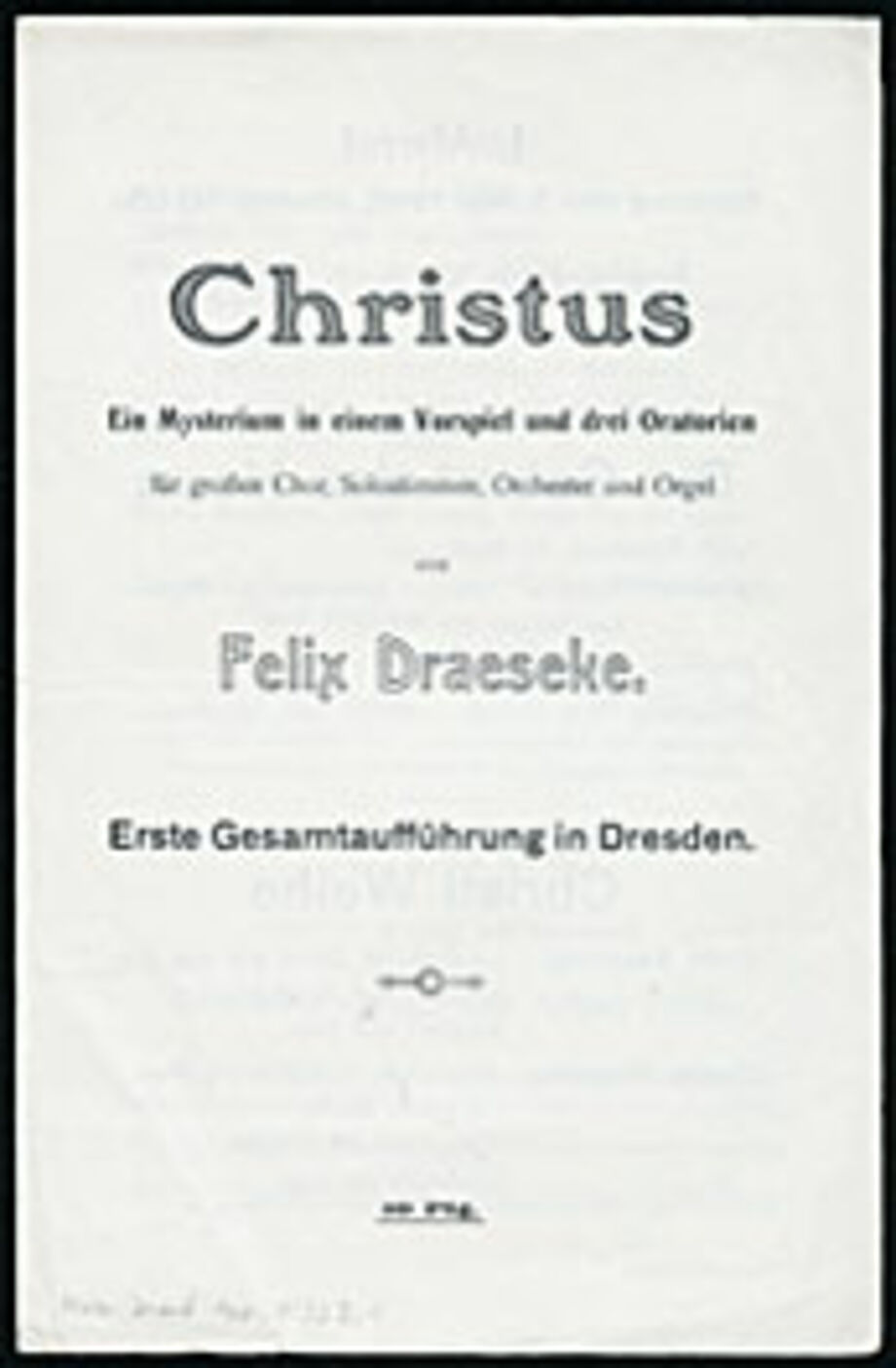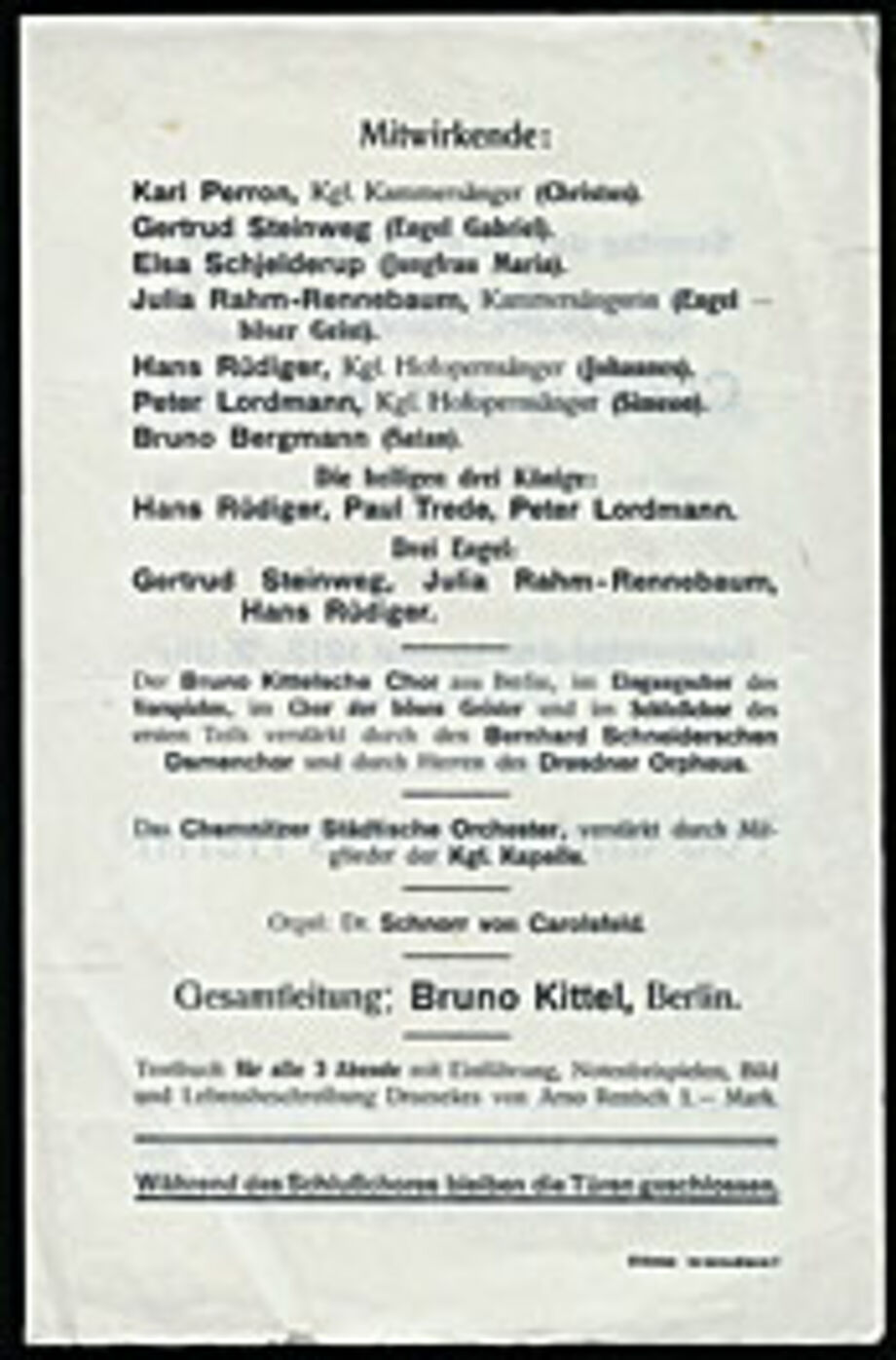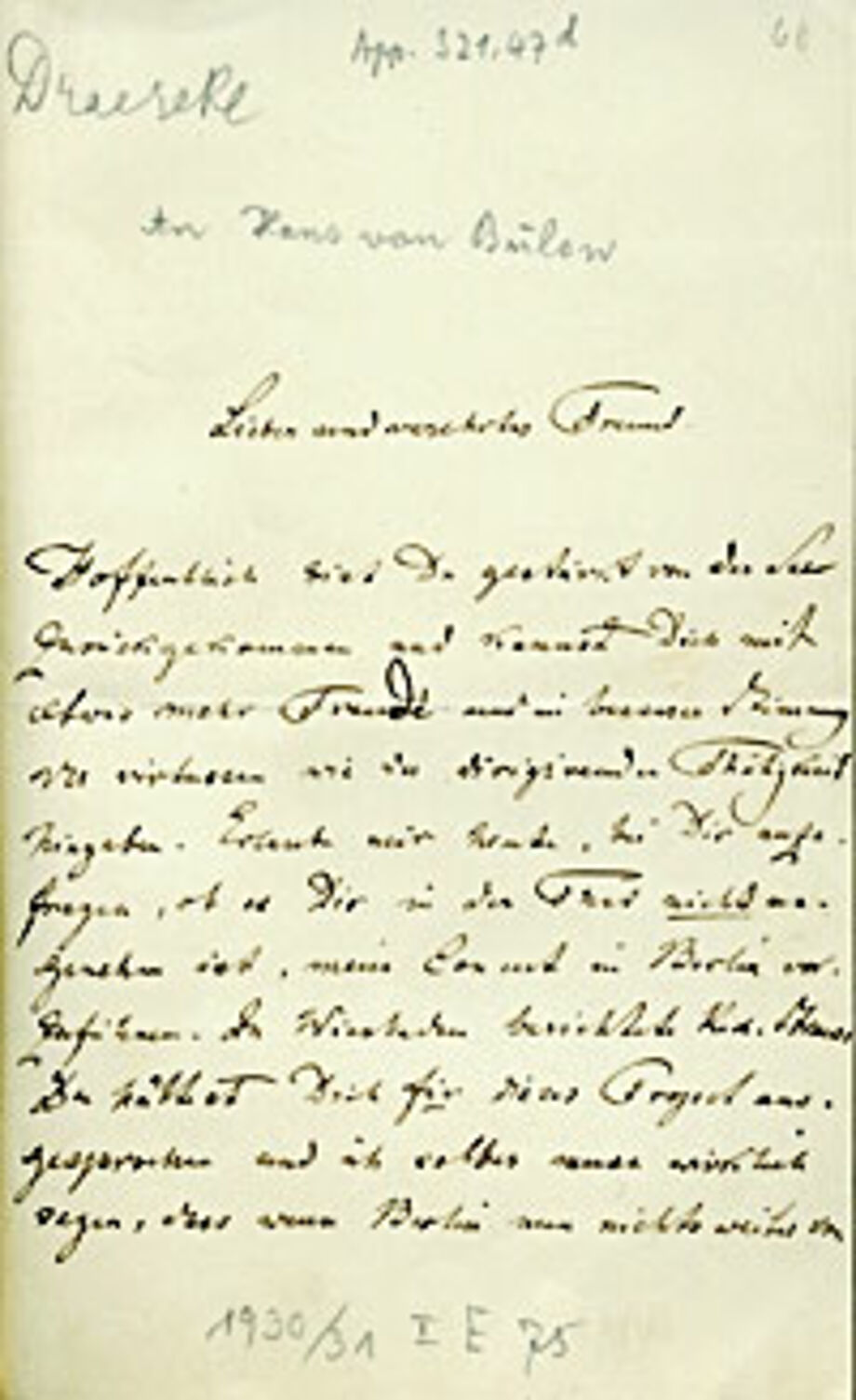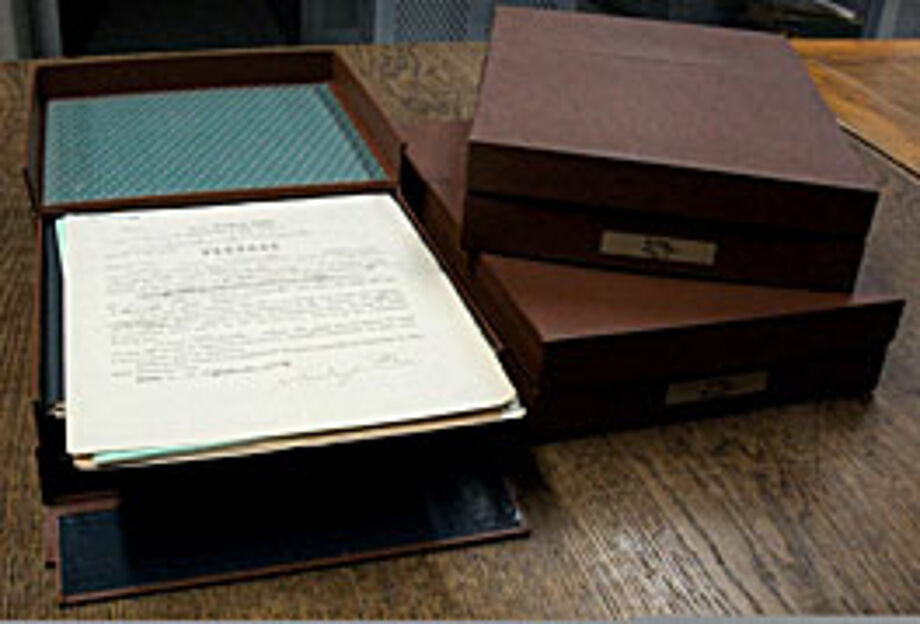Estate of Felix Draeseke (1835 - 1913)
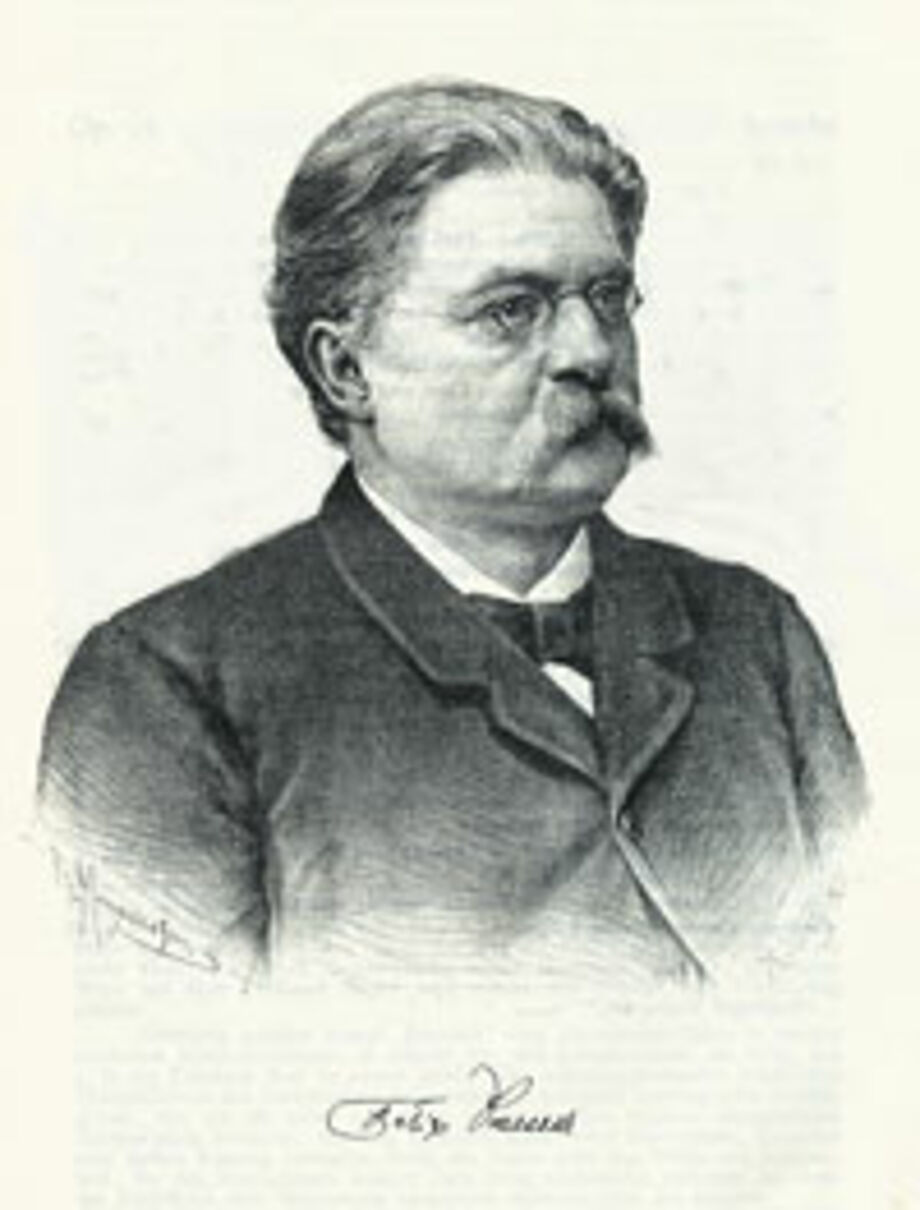
Already during Felix Draeseke's lifetime, the Royal Public Library of Dresden showed great interest in his composition autographs. Of the acquisitions made at that time, the autograph piano reduction Christus. Vorspiel: Die Geburt des Herrn op.70 still exists. After the death of his widow Frida Draeseke, in 1942, the estate of Felix Draeseke went to the Dresden City Library, which after 1945 passed on its autograph holdings to the City Archives. The Saxon State Library took over the estate from the City Archive in 1958. Today the estate is divided between the music department (Mus.7099-...) and the manuscript collection (Mscr.Dresd.App.1193-1195) of the SLUB Dresden.
Felix Draeseke was born in Coburg and came from a family of theologians. His grandfathers were well-known personalities. His father Theodor Heinrich Timotheus Draeseke (1808 - 1870) was appointed court preacher of the Coburg castle church in 1834, his mother Maria Hanstein died a few days after the birth of her son. A theological career was intended for the gifted boy. From 1850 Draeseke was taught composition by the flute virtuoso Johann Caspar Kummer. In 1852, he decided to pursue a career as a musician and began studying at the Leipzig Conservatory. In Leipzig, Ignaz Moscheles and Julius Rietz were among his teachers. Franz Liszt, whose enthusiasm for Wagner was transferred to Draeseke, also influenced his training.After several failed attempts to establish himself in musical life, he went to Lausanne in 1862 as a piano teacher. Around 1870 he undertook some extensive travels. From 1876 until the end of his life he settled in Dresden as a freelance composer and music writer. In 1884 he was appointed teacher of composition, counterpoint and harmony at the Dresden Conservatory. In 1892 he was appointed professor, and in 1894 he married his pupil Frida Neuhaus. She became an indispensable support to him and later administered his estate. In February 1912, Draeseke experienced his last great triumph with the first complete performance of the four-part Christus-Mysterium. He died in Dresden on 26 February 1913 at the age of 77.Felix Draeseke's oeuvre covers a broad spectrum of genres (opera, symphonic poetry, chamber music, lied and ballad). Of his orchestral works, the Symphonia tragica was the most successful. In the field of sacred music, the Requiem in B minor, the Mass in F-sharp minor and the oratorio Christus were acclaimed. Of the secular choral works, the "concert piece" Die Heinzelmännchen was widely performed. Rather unknown to the general public, Draeseke was highly regarded in professional circles. Brahms, Hans von Bülow, Arthur Nikisch and Hans Pfitzner championed his works. Draeseke was not only an artist, however. In his writings Der gebundene Styl and Konfusion in der Musik he also expressed himself as a theoretician.
According to the chronicle of his life by Martella Gutiérrez-Denhoff, primary and secondary literature on Draeseke exists in 65 German libraries and archives. The Draeseke holdings of the SLUB Dresden are among the most important.
The compositional estate includes about 70 manuscripts, some of which are autographs, which are listed in the RISM catalogue and about 70 percent of all Draeseke's printed compositions. All existing printed music is listed in the SLUB catalogue. They were mainly published by Forberg, Junne, Kistner and Kahnt in Leipzig, Hoffarth in Dresden and Bote & Bock in Berlin. Another 75 compositions by Draeseke students arrived at the SLUB with the estate, including works by Theodor Röhmeyer, Hermann Stephani and Nicolai Struve. There were also 76 books in the estate.
Felix Draeseke Estate in the Manuscript Collection
Draeseke's documents are listed in a finding aid and in the manuscript database of the SLUB. The collection includes handwritten notes on his life and work, letters, pictorial documents, concert programmes, assessments of his activities as a piano and harmony teacher in Switzerland, employment contracts and awards in eight capsules. In addition to the estate, there are further letters and documents on Felix Draeseke that come from various other estates, including the estates of the singer Fritz Weiß as well as the violinist Eduard Rappoldi and the wife and pianist Laura Rappoldi-Kahrer.
Letter to Hans von Bülow, October 11, 1889Mscr.Dresd.App.321,47dDearand dear friend, I hope that you have returned from sea strengthened and can devote yourself to virtuoso and conducting activities with a little more joy and in a better mood. Allow me to ask you today if it is indeed not pleasant for you to perform my concerto. In Wiesbaden, Rich. Strauss reported in Wiesbaden that you had spoken out in favour of this project and I myself must really say that if Berlin hears nothing further from me [...] With ancient veneration, your most devoted F. Draeseke sends his warmest greetingsDresden d. 11 Oct. 1889
